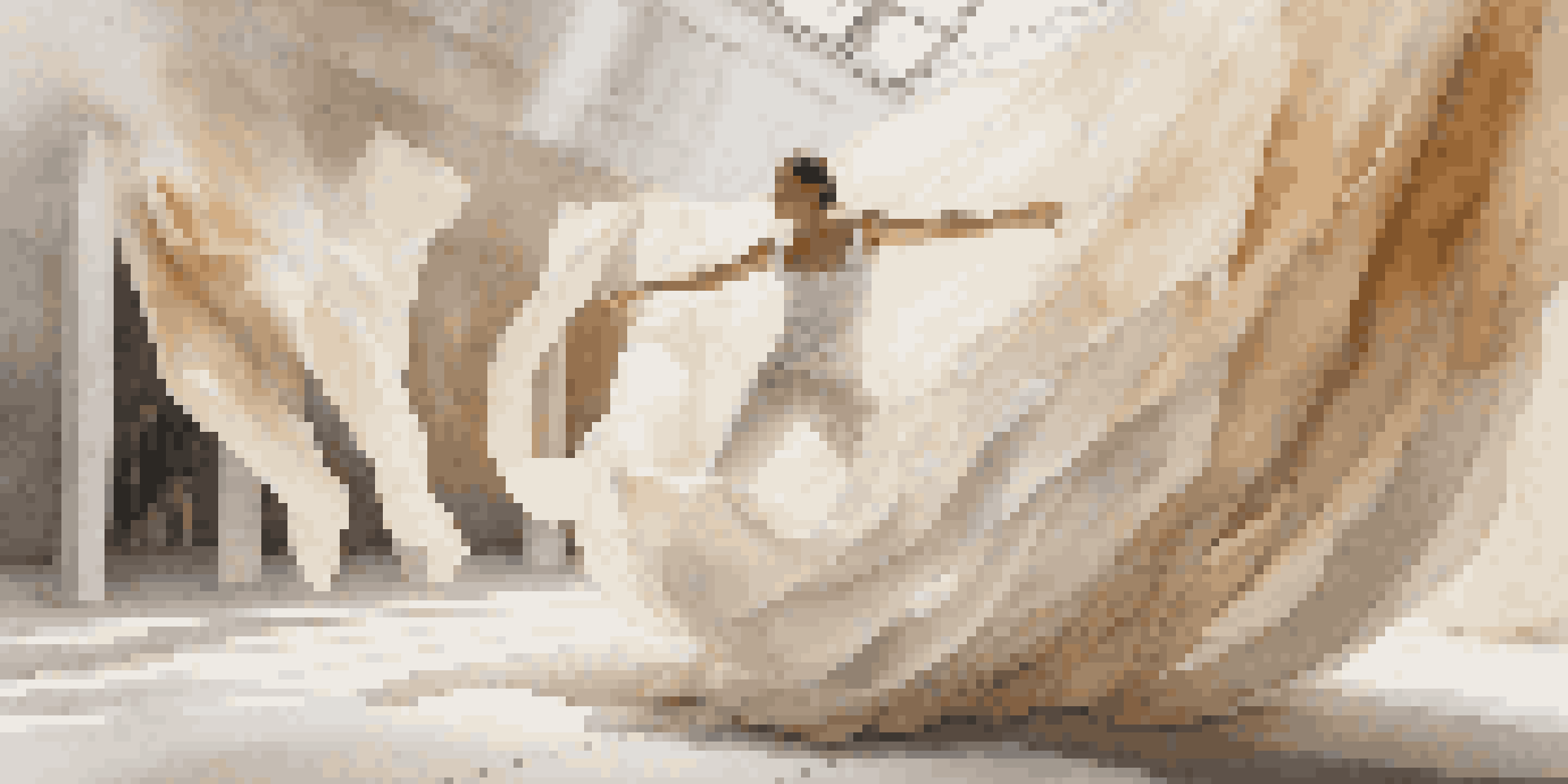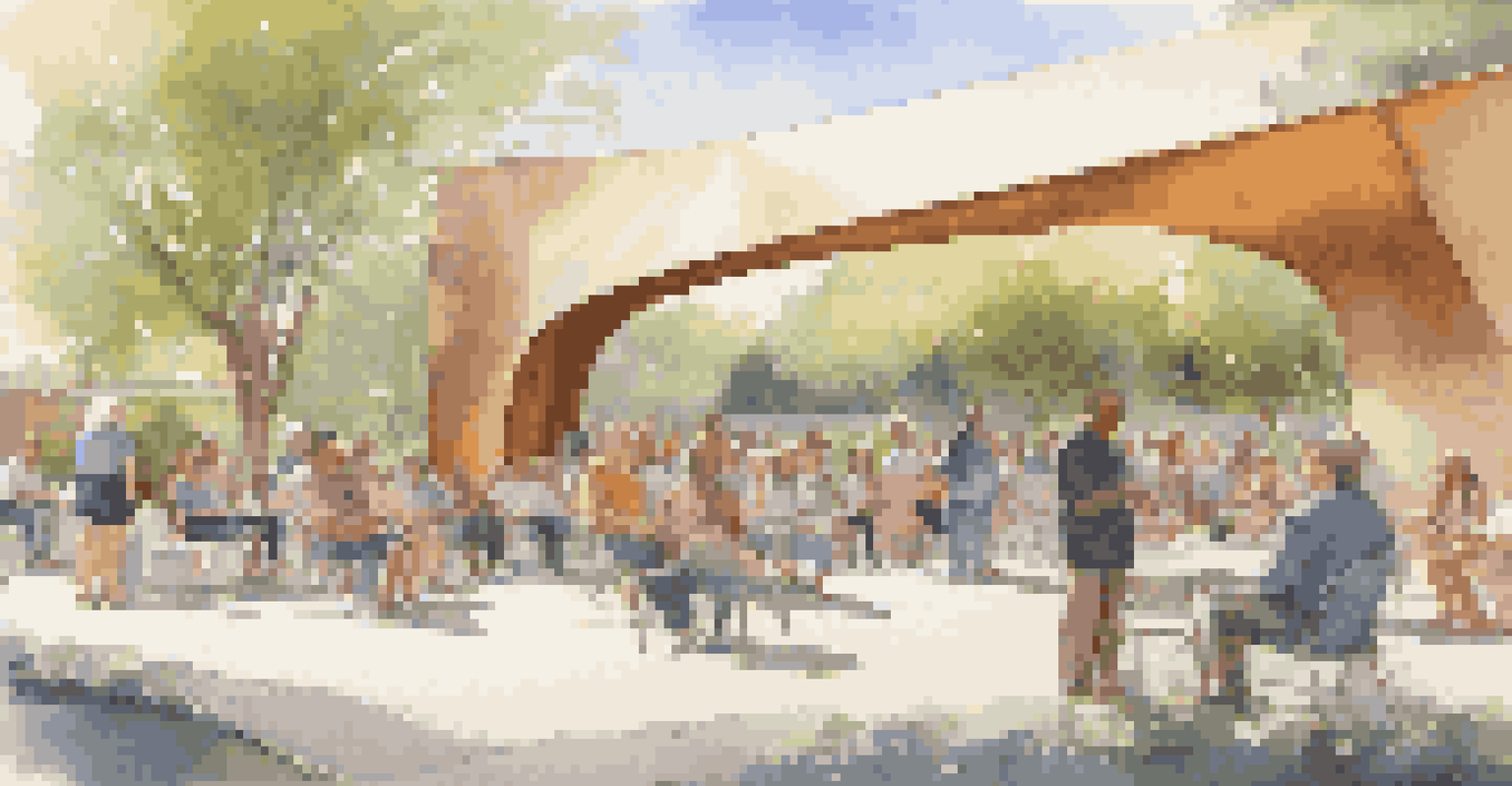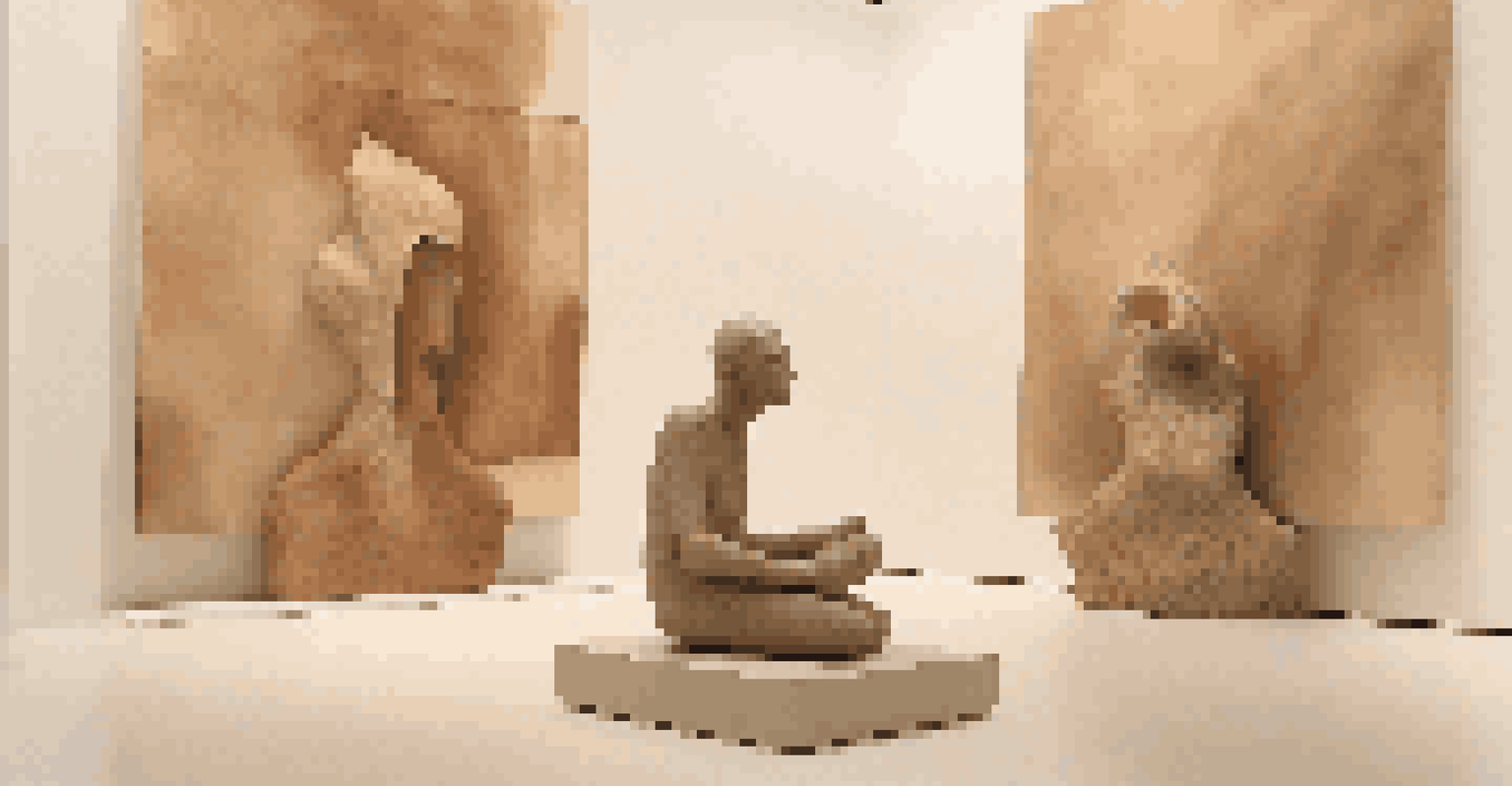The Intersection of Sculpture and Performance Art

Understanding Sculpture and Performance Art
Sculpture, traditionally a three-dimensional art form, uses materials like clay, metal, or stone to create tangible pieces. Performance art, on the other hand, emphasizes the artist's action, often blurring the lines between visual art and theatricality. Both forms, while distinct, share a core essence: they are expressions of human experience and emotion.
Art is not what you see, but what you make others see.
To appreciate how these two art forms intersect, it's essential to recognize their individual strengths. Sculpture offers a physical presence, inviting viewers to engage with it spatially. In contrast, performance art provides a temporal experience, allowing audiences to witness an unfolding narrative, often laden with symbolism.
When combined, sculpture and performance art can create immersive experiences that challenge viewers' perceptions. Think of a live performance taking place within or around a sculptural installation—this interplay can evoke a more profound emotional response, creating a dialogue between the artwork and the audience.
Historical Context of Sculpture and Performance Art
The roots of performance art can be traced back to the early 20th century, with movements like Futurism and Dada challenging traditional art forms. Artists began to explore the body as a medium, focusing on actions and experiences rather than static objects. Meanwhile, sculpture was evolving too, with modern artists experimenting with abstract forms and materials.

By the 1960s, performance art gained significant traction, often incorporating elements from various artistic disciplines, including sculpture. Artists like Yves Klein and Joseph Beuys began to fuse physical objects with their performances, thereby creating a new form of expression. This melding set the stage for future explorations at the intersection of these two mediums.
Fusion of Sculpture and Performance
The blending of sculpture and performance art creates immersive experiences that invite viewer participation and emotional engagement.
As art continued to evolve, contemporary artists started to use sculpture not just as a standalone form but as a backdrop or catalyst for performance. This historical context shows how the evolution of both art forms has led to innovative collaborations, enriching the art world today.
Notable Artists Blending Sculpture and Performance
One of the most renowned artists in this realm is Marina Abramović. Her iconic performances often incorporate sculptural elements, such as her piece 'The Artist is Present,' where her physical presence became a sculptural installation in itself. Through her work, Abramović challenges the boundaries of viewer participation and the physicality of art.
The artist is the creator of beautiful things. To reveal art and conceal the artist is art's aim.
Another notable figure is Antony Gormley, whose sculptures frequently engage with the human form. His installations invite viewers to participate, transforming passive observation into active interaction. In this way, Gormley’s work embodies the essence of performance art while remaining rooted in sculpture.
These artists exemplify how the fusion of sculpture and performance can create powerful narratives. When the viewer becomes part of the artwork, it transcends mere observation, allowing for a shared experience that speaks to the heart of both disciplines.
The Role of Space in Sculpture and Performance
Space plays a pivotal role in both sculpture and performance art, influencing how audiences perceive and interact with artworks. In sculpture, the surrounding environment can enhance or alter the experience of the piece, creating a dialogue between the work and its location. Similarly, performance art often relies on specific spaces to convey meaning, making the setting a crucial element of the piece.
When these two art forms come together, the significance of space becomes even more pronounced. For instance, a performance that takes place inside a sculptural installation can transform the viewers’ understanding of both the sculpture and the performance. The physical boundaries create a stage, while the artwork provides context and depth.
Historical Evolution of Art Forms
The development of performance art in the 20th century has significantly influenced contemporary sculpture, leading to innovative collaborations.
This interplay encourages artists to consider how their work will inhabit a space and how viewers will engage with it. Ultimately, the fusion of sculpture and performance art invites audiences to explore their surroundings in new and exciting ways.
Audience Interaction in Combined Art Forms
One of the most intriguing aspects of blending sculpture and performance is the potential for audience interaction. In many contemporary works, the viewer is not just a passive observer but an active participant in the artwork. This engagement can take many forms, from physically moving through a space to being invited to interact with the sculpture itself during a performance.
Take, for example, Olafur Eliasson’s installations that often encourage visitors to engage with the environment. His works blur the lines between sculpture and performance, inviting audiences to become part of the artistic experience. This kind of interaction fosters a deeper connection between the viewer and the artwork, transforming the art into a shared experience.
The resulting dialogue can evoke strong emotional responses, creating a sense of community and personal reflection. By combining sculpture and performance art, artists can challenge traditional notions of art consumption and encourage viewers to explore their own role within the artistic narrative.
The Impact of Technology on Sculpture and Performance
In today's digital age, technology has significantly impacted both sculpture and performance art. Artists are now incorporating video, virtual reality, and interactive elements, expanding the boundaries of how these forms can coexist. This technological integration offers new possibilities for expression and audience engagement.
For instance, artists like Jenny Holzer utilize LED technology to create dynamic sculptures that also function as performance pieces. Her work often combines text and visuals, inviting viewers to reflect on societal issues while interacting with the artwork. This fusion showcases how technology can enhance the experience of both mediums.
Technology's Role in Art
The integration of technology in sculpture and performance art expands creative possibilities and enhances audience interaction.
Moreover, technology allows for the documentation and dissemination of performances that were once ephemeral. By capturing these moments, artists can create a lasting impact that extends beyond the live experience, further merging the realms of sculpture and performance art.
Future Directions in Sculpture and Performance Art
As we look to the future, the intersection of sculpture and performance art is likely to continue evolving. Emerging artists are experimenting with new materials and techniques, pushing the boundaries of traditional practices. This creative exploration will undoubtedly lead to innovative forms of expression that challenge and inspire.
Additionally, the growing emphasis on social and political issues in art suggests that these two disciplines will increasingly collaborate to address contemporary concerns. Artists may use the combined power of sculpture and performance to comment on pressing societal topics, fostering dialogue and reflection in their audiences.

Ultimately, the future of sculpture and performance art is bright, with endless possibilities for collaboration and innovation. As artists continue to explore this intersection, they will create experiences that resonate deeply with viewers, enriching the art world and our understanding of human expression.